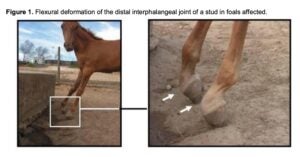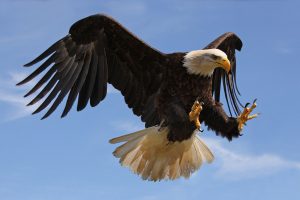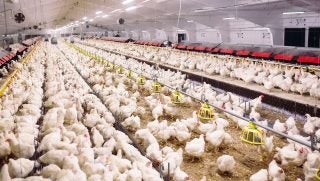Wind turbines are a common sight across rural America. Texas, which in 2022 generated more than 25 percent of all U.S. wind-sourced electricity, led the country for the 17th consecutive year.
However, there have long been concerns about wind turbines, particularly about whether there is a negative impact on wildlife and livestock, not to mention people. In 2006, Dr. Nina Pierport coined the term “Wind turbine syndrome” as part of a study that surveyed 38 people living near wind turbines. The individuals studied noted symptoms such as sleep disorders, headaches, tinnitus, dizziness, nausea, visual disorders, heart failure, and problems with concentration and memory.
In 2021, a French court recognized “turbine syndrome” claims by a Belgian couple living near a wind farm. The plaintiffs were awarded more than €100,000 in compensation by the judge in Toulouse for the damages they claimed nearby turbines had on their health. The claim was initially dismissed by the court of Castres in 2020.
So what about in relation to animals. There is definitely worry among some farmers and ranchers:
“Wind turbines are killing birds. The sound is killing whales. A Stud farm in Texas, also proved this. His foals got turbine foot. Damage to the developing cartilage on all his foals as they grew. A new field full of turbines on his perimeter. He then imported a foal not from his stock, healthy vet checked. It started getting turbine foot. The vibration and hum was recorded. All possible contaminants rules out. He won the case.”
This was said in a Facebook post by Jamie Murray on March 7, which has now been shared over 7,700 times.
Although commenting on the post appears to have been turned off, reactions citing the “research” on social media have been strong. And it’s no wonder — turbines dot the landscape in rural America with their massive structures, noise, and size. The perceived negative impacts on lifestyles and the environment have left many questioning their impact.
Reports blame turbines when no other causes are found
Taking a few minutes to read the documents about wind turbine syndrome, here’s what we discovered:
First, the “study” referenced in the Facebook post was written up as a master’s thesis titled Acquired flexural deformity of the distal interphalangic joint in foals.
The paper was submitted at the College of Veterinary Medicine in Lisbon, Portugal (not Texas) in 2012 — 12 years ago. Although the information provided was likely presented for a grade, it is not a research paper presented in a peer-reviewed format by a veterinarian or Ph.D. candidate.
The subjects under question included 11 Lusitano horses between 0 and 48 months old. Nine horses were born at the farm, and two were purchased from a different breeder.
According to the paper, flexural deformities were not noted in horses on the farm before 2008. However, after 2008, the breeder observed a “marked hyperflexion of the distal interphalangeal joint occurring in the same sagittal plane.” Essentially, the horses experienced equine flexural limb deformities, otherwise known as boxy foot, or club foot.
Although the stud farm said that the diet and nutrition provided to the young horses did not change before 2008, ELFD can be caused by various factors, such as congenital, nutritional, infectious diseases, and trauma. In young horses, EFLD typically follows the inability of the deep digital flexor tendon to follow bone growth during rapid growth periods during the foal’s first years of life.
The appearance of abnormalities coincided with installing wind turbines built on the land adjacent to the stud farm.

But, as we know, correlation does not necessarily equal causation, and the author of the paper explains, “In the present study no reliably scientific data were found about the natural frequencies of the cells of horses that could safely infer about the effect of noise in the immediate vicinity of the stud with the cellular changes of these animals.”
Anecdotal reports from livestock farmers worldwide have raised concerns about wind turbines. No matter the species, reports blame wind turbines when no other cause is found.
For example, beginning in 2012, two French farmers located near a wind farm in Louire-Atlantique reported problems with their livestock, including reduced milk yields, poor quality, behavior problems, and increased mortality.
ANSES, the French Agency for Food, Environment, and Occupational Health and Safety, investigated and concluded that the “timeline of the disorders is incompatible with the periods when the wind farm was built and commissioned.”
In the Penghu region of Taiwan, farmers became concerned when 400 goats died on farms near wind turbines in 2009.
Then again, in Ontario, Canada, another goat farmer noted that 20 of their nanny goats miscarried or had kids that died after birth.
In Poland, a five-week study was conducted, which involved dividing 40 geese into two separate groups. Group one was situated 50 meters from the turbines, while Group two was 500 meters away. The geese from group one exhibited less weight gain and showed a higher cortisol concentration in their blood than those in group two. Additionally, there were reported changes in behavior among the geese in group one.
In 2016, rumors surrounding dead or stranded whales on New England beaches coupled with offshore turbines built off of Rhode Island and Virginia resulted in lawsuits from community groups seeking to cancel the projects.
“With whale strandings along the Northeast earlier this year in places like New Jersey, the reality is that it’s not from offshore wind,” said Aaron Rice, a marine biologist at Cornell University.
The National Oceanic and Atmospheric Administration reported that 40 percent of whale carcasses showed evidence of death caused by fishing gear entanglement or being hit by boats.
Wind turbines responsible for killing and wounding eagles
In 2022, ESI Energy Inc. was sentenced in Cheyenne, Wyoming, for violations of the Migratory Bird Treaty Act.
ESI pled guilty to three counts of violating the MBTA, each based on the documented deaths of golden eagles due to blunt force trauma from being struck by a wind turbine blade at a particular facility in Wyoming or New Mexico, where ESI had not applied for the necessary permits.
Then, they further acknowledged that at least 150 bald and golden eagles have died since 2012 across 50 of its 154 wind energy facilities. 136 of those deaths have been affirmatively determined to be attributable to the eagle being struck by a wind turbine blade.
Finally, ESI agreed to a deal in which they must pay a fine of $1,861,600 and compensate $6,210,991 for damages. They’re also on a five-year probation and must follow the Eagle Management Plan. This plan requires them to spend up to $27 million to protect eagles during probation, even more so if they extend it.
If they harm or kill bald or golden eagles, they must pay $29,623 per eagle. Over the next three years, ESI must apply for permits for any harm they might cause to eagles at 50 of their facilities.

Why wind power?
Wind power isn’t new. It has been harvested for centuries, propelling ships, milling grain, and pumping water. However, the widespread use of utility-scale wind turbines began only 30 to 40 years ago and has been growing rapidly.
A wind turbine harnesses energy by utilizing the aerodynamic force generated by its rotor blades. As the wind passes over the blades, it prompts the rotor to rotate, which drives a generator to produce electricity. This electricity is then transmitted to end-users via an extensive network of transmission and distribution lines spanning the state.
Most large-scale wind turbines feature a horizontal axis configuration, with typically three blades affixed to a towering structure ranging from 300 to 415 feet in height. As of 2022, newly installed turbines boasted an average capacity of 3 MW. These turbines are often clustered together to form wind farms, comprising numerous individual turbines spread across expansive areas.
As of May 2023, the U.S. Geological Survey’s Wind Turbine Database recorded more than 72,731 turbines in the U.S. with a total rated capacity of 142.2 GW.5 Wind is the fourth-largest source of electricity generation in the country, with enough power to serve the equivalent of 46 million homes.


